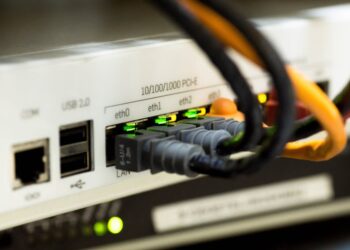Maintaining clean and healthy drinking water is a fundamental aspect of household wellness, and Samsung refrigerators come equipped with water filters designed to ensure just that. However, like any filtration system, these filters require regular replacement to perform at their best. In this comprehensive guide, we will walk you through the step-by-step process of changing the water filter in your Samsung refrigerator. Whether you’re a first-time filter changer or looking for a refresher, this article will equip you with the knowledge and confidence to maintain the purity of your water supply, ensuring your family’s health and safety.
How To Change Samsung Water Filter?
Changing the water filter in your Samsung refrigerator is a straightforward process. Still, following the steps carefully is important to ensure your water remains clean and safe to consume. Here’s a detailed guide on how to change your Samsung water filter:
Gather Supplies: Before starting, ensure all the necessary supplies are ready. You’ll need a replacement water filter designed for your Samsung refrigerator model. Check the filter’s packaging for compatibility. These filters are typically readily available online or at appliance stores.
Locate Your Refrigerator Model: Knowing your refrigerator model is crucial because different Samsung models may have slightly different filter locations and procedures. The model number can usually be found on a sticker inside the refrigerator or on the side of the door. Write it down for reference.
Turn Off The Ice Maker (If Applicable): If your Samsung refrigerator is equipped with an ice maker, it’s a good idea to turn it off temporarily during the filter replacement process. This helps prevent ice production that could lead to water leaks or complications during the replacement. The ice maker switch is typically inside the freezer compartment or on the ice maker itself. Switch it to the “Off” position.
Find The Water Filter Compartment: Open your refrigerator door and locate the water filter compartment. In most Samsung refrigerators, this compartment is either inside the refrigerator near the top or in the lower grill, accessible from the front.
Reset The Water Filter Indicator Light: If your refrigerator has a water filter indicator light, it’s essential to reset it to monitor the filter’s lifespan accurately. Refer to your refrigerator’s user manual for specific instructions on resetting the indicator light.
Dispose Of The Old Filter: Dispose of the old water filter according to your local recycling guidelines. Check with your local waste disposal authority or recycling center for specific instructions on disposing of water filters. Some areas may have recycling programs for water filters to reduce environmental impact.
Run A Test: Dispense some water from the refrigerator’s water dispenser to ensure no leaks and that the water flows properly. Seeing some cloudiness or air bubbles initially is normal, but these should clear up quickly.
The Importance Of Changing The Water Filter
Changing the water filter in your refrigerator is of utmost importance for several key reasons:
Water filters are designed to remove impurities, contaminants, and sediments from your tap water. Over time, these filters become saturated with contaminants, including chlorine, heavy metals, bacteria, etc. When the filter is no longer effective, these impurities can leach into your drinking water, compromising its quality and taste.
Regularly changing the water filter ensures you and your family access clean and safe drinking water. Consuming impure water can lead to health issues, including gastrointestinal problems, allergies, and other health concerns, primarily if your water source has known contaminants.
As a water filter becomes less effective, you may notice changes in the taste and odor of your tap water. An old filter can give water a stale or unpleasant taste, making it less appealing to drink and use for cooking and beverages.
Water filters also vitally protect your refrigerator’s water and ice dispensing system. When a filter is clogged or old, it can reduce water flow, leading to slower ice production and less efficient water dispensing. Replacing the filter can help restore optimal performance, ensuring you always have a steady supply of ice and water.
Refrain from changing the water filter to avoid clogs in the filter or the water lines, resulting in water leaks and damage to your refrigerator and surrounding areas. Repairing such damage can far exceed the cost of regularly replacing the filter.
A clean and well-maintained water filter can contribute to the overall longevity of your refrigerator. It helps prevent mineral buildup and corrosion in the water lines and dispensing system, reducing wear and tear on these components.
Many water filters are designed to be replaced but can often be recycled through manufacturer programs or local recycling centers. Regularly changing your filter and properly disposing of the old one can help reduce environmental impact by preventing unnecessary waste.
Manufacturers often provide guidelines on the recommended frequency for changing water filters in their appliances. Adhering to these recommendations can help maintain warranty coverage and ensure that your appliance continues to operate as intended.
What Are The Benefits Of Regular Water Filter Replacement?
Regular water filter replacement offers several important benefits for both your health and the proper functioning of your appliances:
Clean And Safe Drinking Water:
The most crucial benefit is that regular filter replacement ensures your tap water remains clean and safe to drink. Water filters are designed to remove impurities and contaminants such as chlorine, sediment, heavy metals, and bacteria. Over time, these filters can become clogged and less effective, allowing these contaminants to pass through. Replacing the filter as recommended allows you to enjoy purified and safe drinking water.
Improved Taste And Odor:
As filters become saturated with contaminants, you may notice a change in the taste and odor of your tap water. Old filters can impart a stale or unpleasant taste to the water, making it less appealing for drinking, cooking, and making beverages. Regular replacement ensures that your water remains fresh and palatable.
Efficient Appliance Performance:
Water filters protect water and ice dispensing systems in appliances like refrigerators. When a filter becomes clogged or old, it can impede water flow, resulting in slower ice production and less efficient water dispensing. Replacing the filter restores optimal performance, ensuring a consistent supply of ice and water.
Prevent Clogs And Damage:
Neglecting to change the water filter can lead to clogs in the filter or the water lines, potentially causing water leaks and damage to your appliances and surrounding areas. Regular filter replacement prevents these issues, saving you the cost and hassle of repairs.
Extended Appliance Lifespan:
A clean and well-maintained water filter can contribute to the longevity of your appliances. It helps prevent mineral buildup and corrosion in the water lines and dispensing systems, reducing wear and tear on these components. By regularly replacing the filter, you can extend the lifespan of your appliances.
Compliance With Manufacturer Recommendations:
Most appliance manufacturers provide guidelines on the recommended frequency for changing water filters. Adhering to these recommendations is often necessary to maintain warranty coverage and ensure that your appliance continues to operate as intended. Neglecting to replace the filter may void your warranty.
Environmental Responsibility:
Many water filters are designed to be replaced but can often be recycled through manufacturer programs or local recycling centers. Regularly changing your filter and properly disposing of the old one can help reduce environmental impact by preventing unnecessary waste.
Health Benefits:
Drinking clean and filtered water is essential for your health. Regular filter replacement ensures that contaminants and impurities are effectively removed from your water supply, reducing the risk of waterborne illnesses and health issues associated with consuming contaminated water.
How To Resolve Water Quality Issues After Filter Replacement?
If you encounter water quality issues after replacing your water filter, it’s essential to address them promptly to ensure you continue to enjoy clean and safe drinking water. Here’s a detailed guide on how to resolve water quality issues after a filter replacement:
- Flush The System: After installing a new water filter, it’s common to experience initial cloudiness or air bubbles. This is particularly true if the filter was air-locked during installation. Run and discard several gallons of water from the dispenser or tap to resolve this issue. This helps clear any trapped air and remove loose carbon particles from the new filter.
- Check For Air Pockets: Air pockets can get trapped in the water lines when replacing the filter. Dispense water for a few minutes to remove these air pockets, allowing any trapped air to escape. This may require patience, as the air can take some time to work out of the system.
- Monitor For Residue: If you notice sediment or black particles in your water after filter replacement, it could be due to the new filter’s activated carbon particles flushing out. Continue running and discarding water until the water runs clear. This should remove any loose particles from the new filter.
- Check Water Temperature: In some cases, fluctuations in water temperature can cause condensation in the filter, resulting in cloudy or discolored water. Ensure that your refrigerator is set to the appropriate temperature, and monitor the water quality as it stabilizes over a day or two.
- Allow Time For Water Quality Improvement: Replacing the filter might take time for the water quality to improve. Continue to use the water dispenser regularly, and over a few days, you should notice a significant improvement in water clarity, taste, and odor.
- Reevaluate Water Source: If the water quality issues persist, consider your tap water source. The quality of your tap water has changed, and the filter is effectively removing impurities. In such cases, you might consider additional filtration options or a water quality test.
- Check Filter Compatibility: Ensure you’ve installed the correct filter for your specific refrigerator model. Using an incompatible filter can lead to water quality problems. Double-check the filter’s model number and consult your refrigerator’s user manual for compatibility information.
Final Words
Changing your Samsung water filter is a simple yet essential task for maintaining clean and healthy drinking water in your home. Following the steps outlined in our comprehensive guide, you can ensure that your water remains pure and safe for you and your family. Remember to mark your calendar for regular filter replacements to continue enjoying the benefits of clean and refreshing water. If you have any questions or need further assistance, please contact us. Cheers to clean water and a healthier lifestyle!
FAQ’s
Do I Need To Turn Off The Water Supply To My Refrigerator Before Changing The Water Filter?
In most cases, you do not need to turn off the water supply to your refrigerator when changing the water filter. However, it’s advisable to consult your refrigerator’s user manual for model-specific instructions and safety precautions.
Is There Any Maintenance Required For The Water Filter Compartment Or Housing?
It’s a good practice to periodically clean the water filter compartment or housing with a mild detergent and warm water. Rinse thoroughly and ensure it’s scorched before installing a new filter. This helps prevent any potential contaminants from entering the system.
Can I Reuse Or Clean And Reuse My Old Water Filter?
No, water filters are designed for one-time use only and should not be cleaned or reused. Replacing the filter with a new, genuine Samsung filter is essential to maintain water quality and ensure proper filtration.







